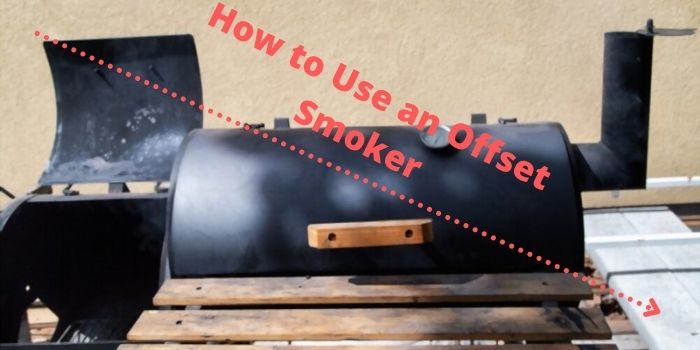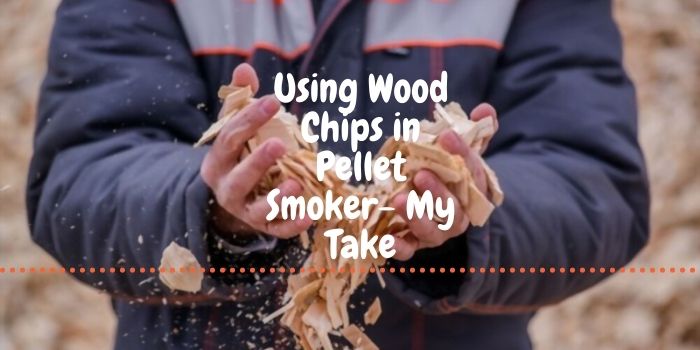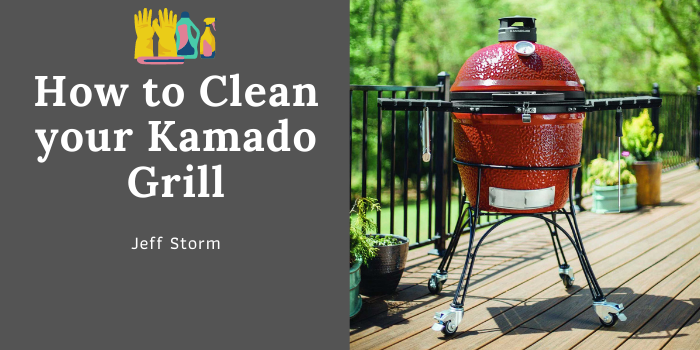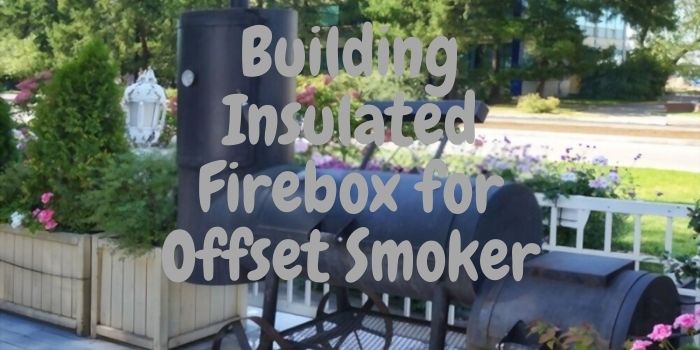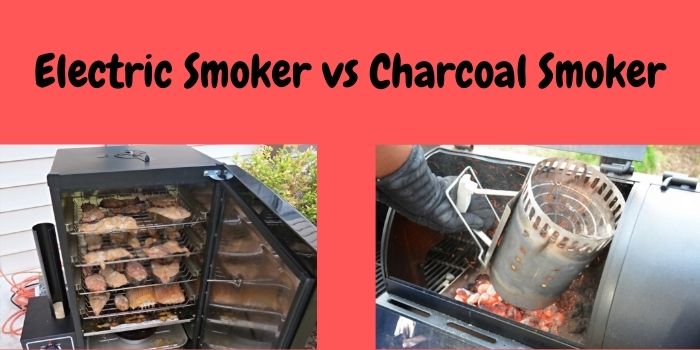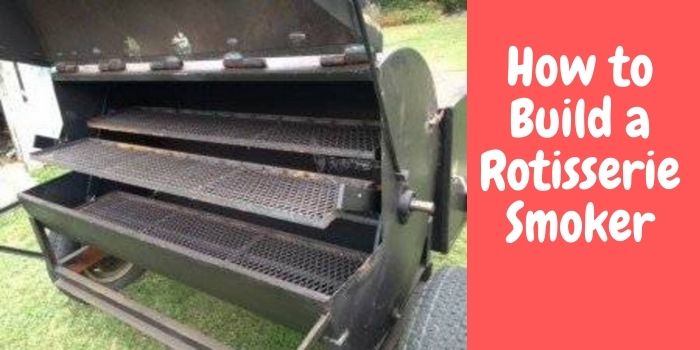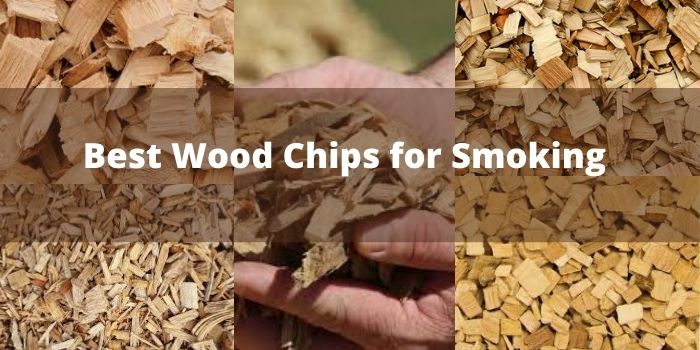How to use an Offset Smoker
Offset smokers have become more demanding and popular among barbeque lovers. Before learning how does an offset smoker works, we need to understand the mechanism of offset smoker first.
The best offset smokers are divided into two main chambers/drums. The bigger chamber is normally main cooking compartment in which food set on many shelves is smoked with hot smoky air coming from burning wood and charcoal in a smaller chamber (which is called fire box) attached to one side. Temperature gauge lets you know temperature of cooking chamber. No matter what type it of offset smoker you are using, the mechanism of cooking the food remains same in each.
What are the main Types of Offset Smokers
- Regular Offset Smoker
- Reverse Flow Offset Smoker
Let’s figure out how are we going to make sure that our offset smoker has enough fire in fire box for required time. Managing a fire in an offset smoker is very difficult. In fact, it’s one of the most difficult things you can do in barbecue and if you don’t nail the fundamentals and get them right you can waste a lot of fuel and your barbecue can come out really bitter.
So in this article, I’m going to discuss fire management to keep the smoker going longer. We’re going to talk about preheating your smoker, your firebox setup and how to use the right type of fuel for the purpose. Besides this our aim to determine how to maintain consistent temperatures and clean burning smoke to keep the smoker going over night.
Mechanism of an Offset Smoker
Let’s start talking about how an offset smoker works because I know a lot of people including myself when I first started assuming that an offset smoker works like other smokers.
Unlike a charcoal smoker, drum smoker, pellet grill, or an electric smoker, offset smokers are unique because they’re meant to be run with small hot fires that burn actual wood.
An offset smoker builds a small hot fire using actual hardwood splits in the offset firebox. That firebox gets really hot. It sends all that smoky hot air through the cooking chamber at a very low temperature around 200 to 300 degrees Fahrenheit and then it exits throughout the exhaust stack.
Throughout this whole system it creates a convection current and a draft that gets sucked in through the firebox vent opening and out through the exhaust stack.
It creates a constant flow of hot air that flows over your barbecue, gives it awesome smoky flavor that you can’t reproduce with any other type of smoker, because you’re burning actual live wood. The bark that these things can produce on barbecue is unparalleled by any other smoker.
I like to say that it’s almost like cooking your barbecue with a hair dryer because you’re blowing hot air out of the firebox over the meat and out the exhaust stack. Your job is to control that draft. Control that fire in the firebox so that it’s always lit and it’s always producing a constant amount of clean burning heat.
Now the key to making all of this work is to:
- Provide sufficient air flow so that air can get into the firebox.
- Provide a sufficient opening at the stack end the exhaust side of the offset smoker so you can create that draft.
- Using really dry clean burning hardwood fuel in the firebox and maintain that fire throughout the whole process.
Efforts you need for Offset Smoker
If you use charcoal by itself, you’re not going to get to the temperatures you need, to cook low and slow barbecue and it’s always going to be below 200 degrees Fahrenheit. Unless you add a ton of charcoal and you keep on loading that firebox with charcoal like you’re a train conductor or something.
Trust me guys I did this when I first started. I went through bags and bags of charcoal until I finally figured out that you need to use actual hardwood and burn it to make this thing operate correctly. So, once we provide the firebox with the type of fuel it needs which is really dry hardwood splits. We give it enough airflow so the vent and the exhaust is open.
In addition to that, you need to keep the firebox lit if it ever goes out flaming. If it ever stops flaming that’s going to start producing really thick smoke which is going to make your barbecue taste really bad.
So what we’re always aiming for is to see that thin blue smoke coming out of the exhaust stack, it should almost be invisible.
You shouldn’t see really any visible smoke coming out of the exhaust stack and if you only see shimmering stream of heat coming out. That is exactly what we want to produce.
A lot of people assume that the more smoke the better and they want that billowing white smoke to come out of the stack but trust me guys that is going to make your barbecue taste like garbage.
It’s going to be way too smoky so if you want to get the awesome flavors that an offset smoker was meant to produce.
Setting up an Offset Smoker
1. Setup a Firebox
- The easiest thing you can do is you can just build the fire on the bottom of the firebox. But this isn’t usually recommended because it doesn’t allow any airflow underneath your fire. It can actually damage the steel on your firebox so the paint can peel off and it’ll get a lot rustier. So that’s not the most ideal way of setting up your firebox.
- The second way of doing it is, you can put a horizontal grate down on the bottom of your firebox so that lifts it off of the bottom provides some more airflow and it gets it away from the firebox sidewalls so it doesn’t peel the paint or damage the metal.
- You can also get a charcoal basket which you can place inside your firebox, you can elevate it a little bit off of the floor of the firebox and start your fire with some charcoal and then put your splits on top of that charcoal basket. It really intensifies and magnifies the heat within that basket so it’s a preferred method for a lot of people.
The way that I like to set up my firebox is in a V format so I use three of the grates that came with my smoker.

I put one horizontal so it elevates the fire off of the bottom of the firebox to provide some airflow and then i do a V-shaped setup with my grates on top of that.

It provides airflow all around the fire. Intensifying the fire and makes it smaller and hotter because there’s a smaller area where those charcoal can funnel down and burn. Then as your fire burns down, it doesn’t spread out and go towards the sides. It’s all funneled down towards the bottom of the V. So, it just gets more intensified it doesn’t get spread out as you burn. That’s the way that I like to do it.
2. Preheating
We always have to preheat the offset smoker for at least an hour because there’s a lot of metal there’s a lot of mass here that needs to come up to temperature so that it can maintain consistent temperature.
Make sure you plan ahead and wake up early enough that you can plan for about an hour or two to preheat your smoker that is going to help you a ton in your fire management and to maintain consistent temperatures to preheat my smoker. You must fill a charcoal chimney up to the brim with natural lump charcoal the bigger the better.
It’s just going to burn hotter and last longer. I put some crumpled up paper and some paper towel in a little ball and then drizzle some oil that just helps it burn more cleanly and for longer.
Then I place the charcoal chimney on top of it. Light it with a little torch and leave it for about 15 minutes until it starts to get really hot. After that I take the charcoal chimney, I close the vent all the way to the firebox, because if you just dump it in without that vent closed then a lot of that charcoal can just fall right out of your firebox.
I open the firebox door and dump in the required.

Opening the air intake all the way I don’t use the little vent on the offset smoker because it doesn’t allow enough air in so I just leave that whole door open the whole time.
I leave my exhaust vent open all the way and never shut it down. Control all of my temperatures by adding wood at the right time in the right quantity instead of using the air intake and exhaust to control the fire.
Because that just inhibits the airflow in the smoker.
Then it is good to place a fresh split of hard wood on top of the charcoal in the firebox.

3. Fuel
Let’s talk a little bit about fuel now as mentioned earlier offset smokers are called stick burners for a reason because they run on small hot fires that are fueled by hardwood splits, what, to me, should be use when you are up at operating temperature.
I’m monitoring the fire and if it’s just dying down and this is what I throw in to maintain those temperatures.
The second type of fuel you’re going to use is natural lump charcoal. You can also use Charcoal Briquettes. I just prefer to use natural lump charcoal because it burns hotter and longer and some people say that it produces a better flavor because it’s less refined and it’s closer to the real thing than a charcoal briquette.
4. Keeping a Smoker Fire Going
Now we’ll talk about maintaining the temperatures. I like to target a temperature zone that’s about +/-25 degrees Fahrenheit so I’ve got about 50 degrees of wiggle room if I try to maintain temperatures within 25 degrees or even 10 degrees.
Keeping around 10 degrees requires a lot more diligence and effort and basically babysitting your fire than trying to maintain 50 degrees.
So I’ll usually target a temperature zone of around 200F to 250F or alternatively depending on what I’m cooking I might target 250F to 300F. So to maintain that temperature I have my phone in my hand which is telling me from my meter app the ambient temperature at all times inside of my offset smoker.
Whatever I’m aiming at in this case for my example, it’s 250 degrees Fahrenheit now how can you anticipate when your fire is going to start decreasing in temperature well there’s a couple ways:
- You can just measure the amount of time that each split produces heat so you’ll know that each split of a similar size produces heat for about 30 to 40 minutes so that means about 20 to 30 minutes in you need to add a new split so that it can start catching fire and start contributing to that temperature by the time the old split burns out.
- The second way is you can just look at the existing split see what it’s doing if it’s really dark and black and it’s cracking and it doesn’t look like it has as much oomph left in it as it did before if it’s not producing as much flame as it did in the first part of when you just put it onto the charcoal bed then you’ll know that it’s probably going to start losing heat pretty quickly so that’s a good time to start adding your fresh split.
A lot of this is just knowing your unit, knowing your smoker and knowing exactly what size and type of fuel you’re using.
Knowing roughly how much heat your splits of wood are going to produce in the firebox so that is why it’s super important to control the humidity that’s inside of your splits of firewood.
The more consistent you can get with your splits the more you can control your fire more effectively.
Because you’ll know exactly how much heat it can produce as soon as you put a split in the firebox and when you need to replace them and that is how I manage my temperatures.
Tips
Lastly i wanted to give you guys a couple pieces of troubleshooting advice.
- If you’re getting a lot of thick white smoke let’s say your fire went out inside your firebox and the split that you added is no longer flaming. In that case you have to open your firebox immediately. Make sure the vents are wide open you can either blow on it or you can wave like a big piece of cardboard on it to provide more air. Make sure that split ignites again or add a fresh dry split if you need to.
- If there’s a ton of dirty white smoke inside of your cooking chamber then you’re really just going to have to open your cooking chamber and clear it out get that bad smoke out until you’re producing good clean thin blue smoke again and then you can shut everything down and you can continue to maintain temperatures.
- If your temperature gets way too high and you’re worried about burning whatever you’re cooking inside the cooking chamber well in this case we don’t want to shut down any of the vents because that’s just going to produce a situation where we have the thick white smoke and then you’ll have to basically reset the whole system.
- Just open the lid of the firebox, all of that hot air is now going to vent through the firebox lid and not into the cooking chamber. So it’s going to decrease the heat inside the cooking chamber by a lot and you just let that fire burn down for about 10 to 15 minutes as long as it takes then you can shut the firebox lid and it should be more in line with the temperatures you want to maintain.
- If you’re worried about decreasing the cooking chamber temperature too much when you do that. Don’t worry about it too much, it only comes down by a few degrees because there’s still hot air from that firebox getting inside the cooking chamber.
